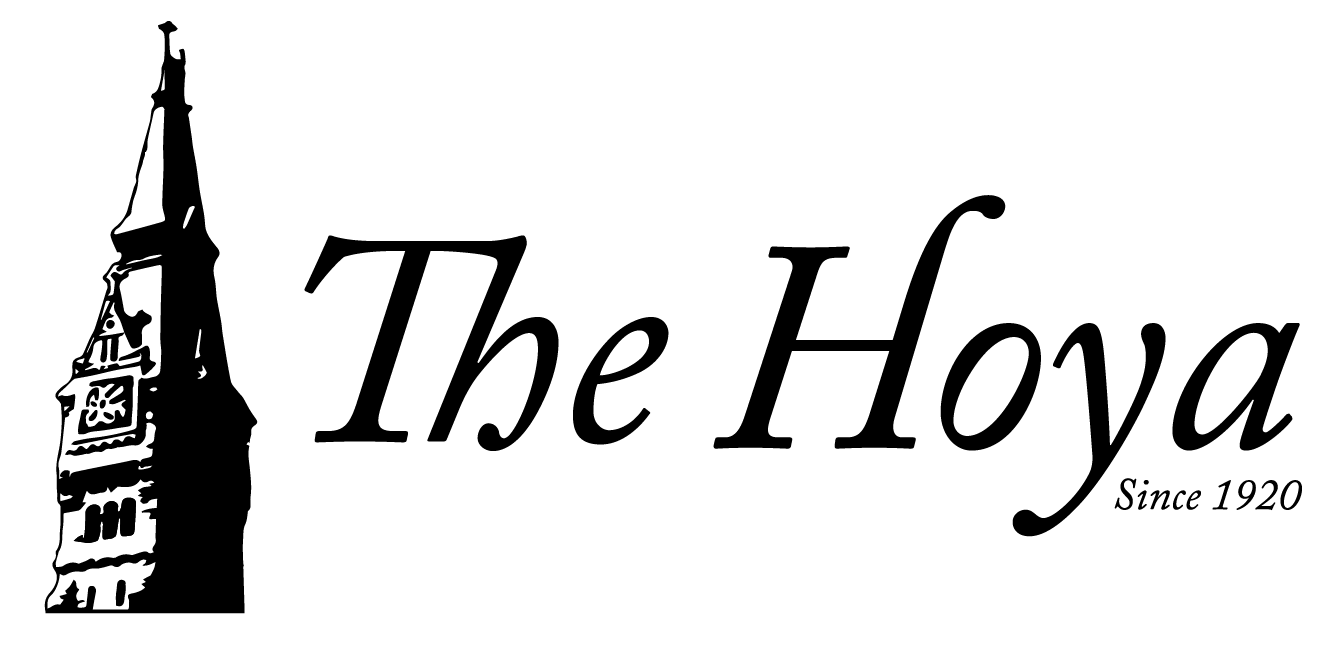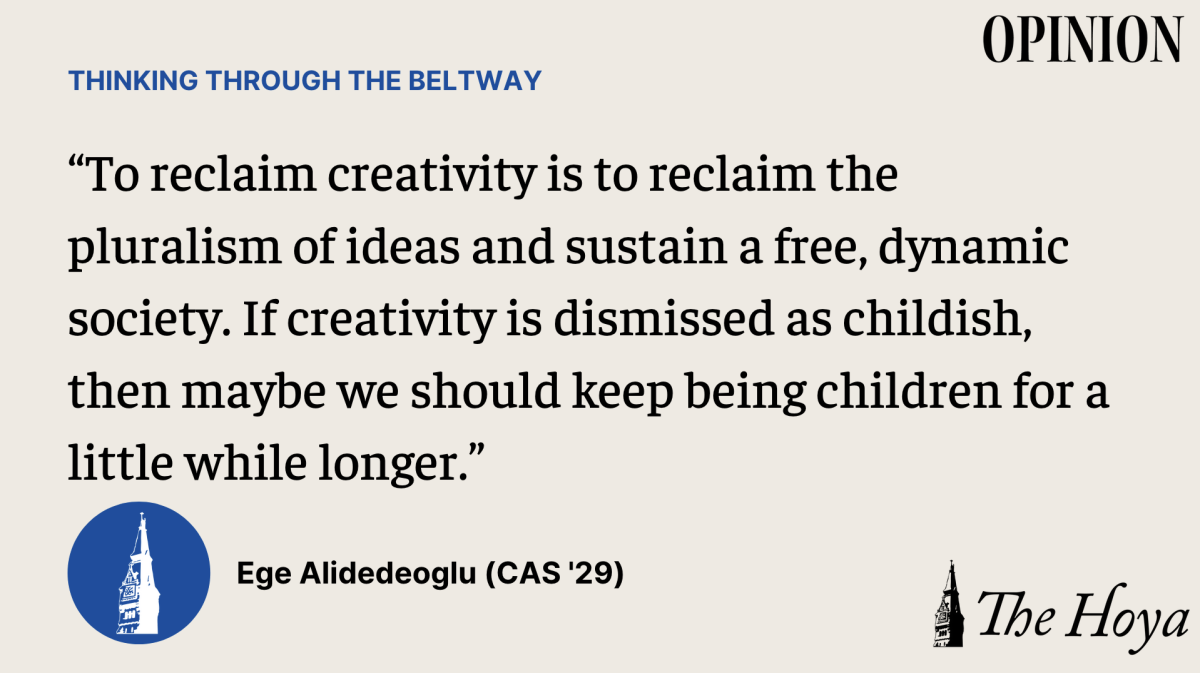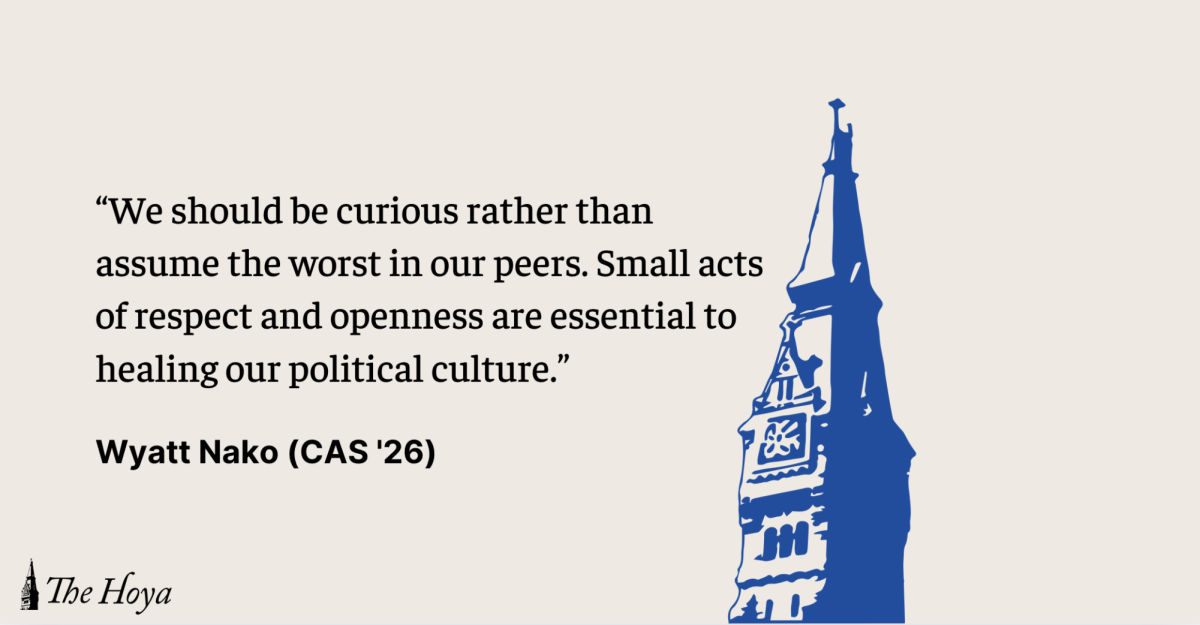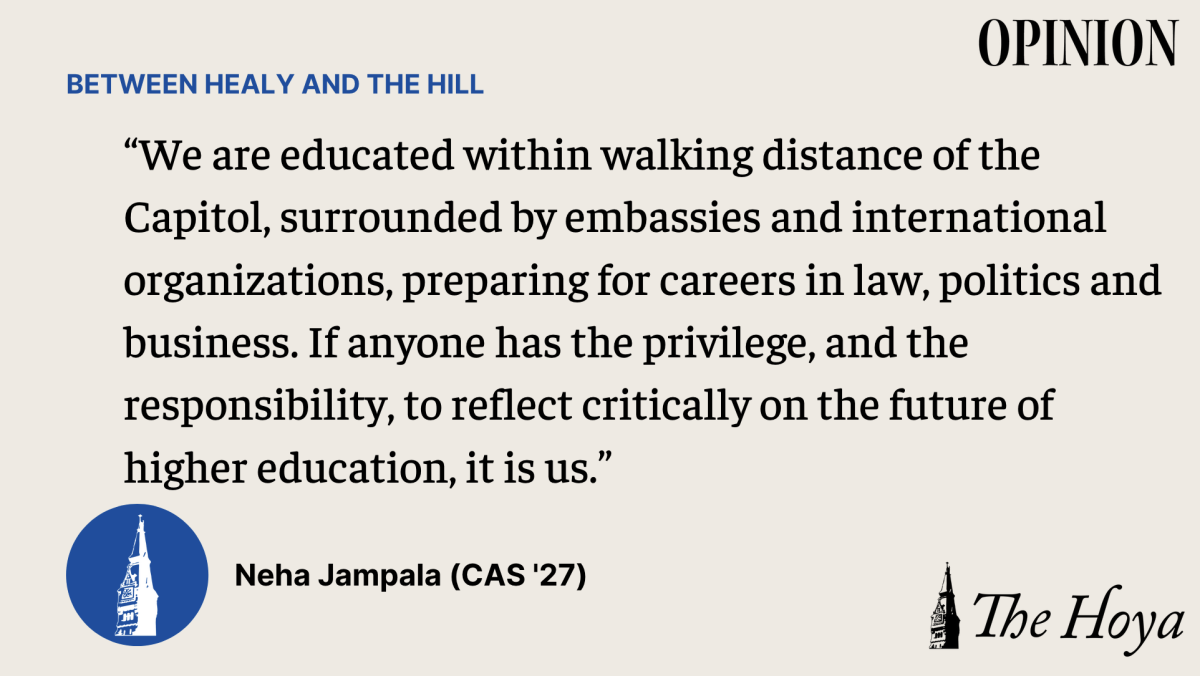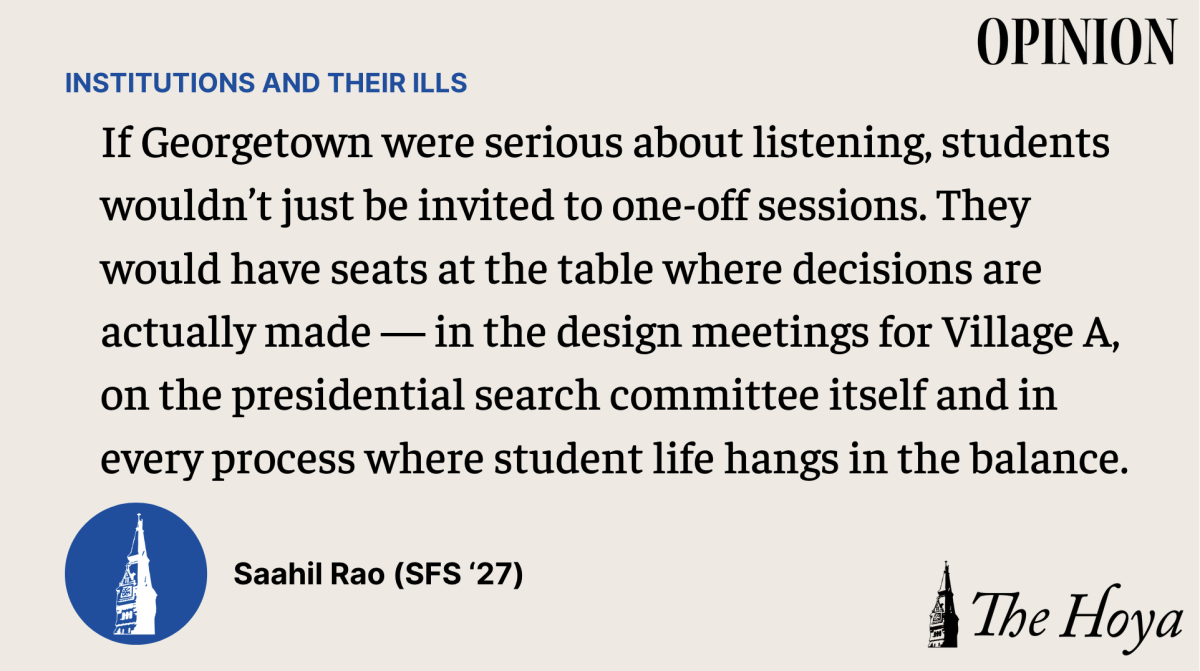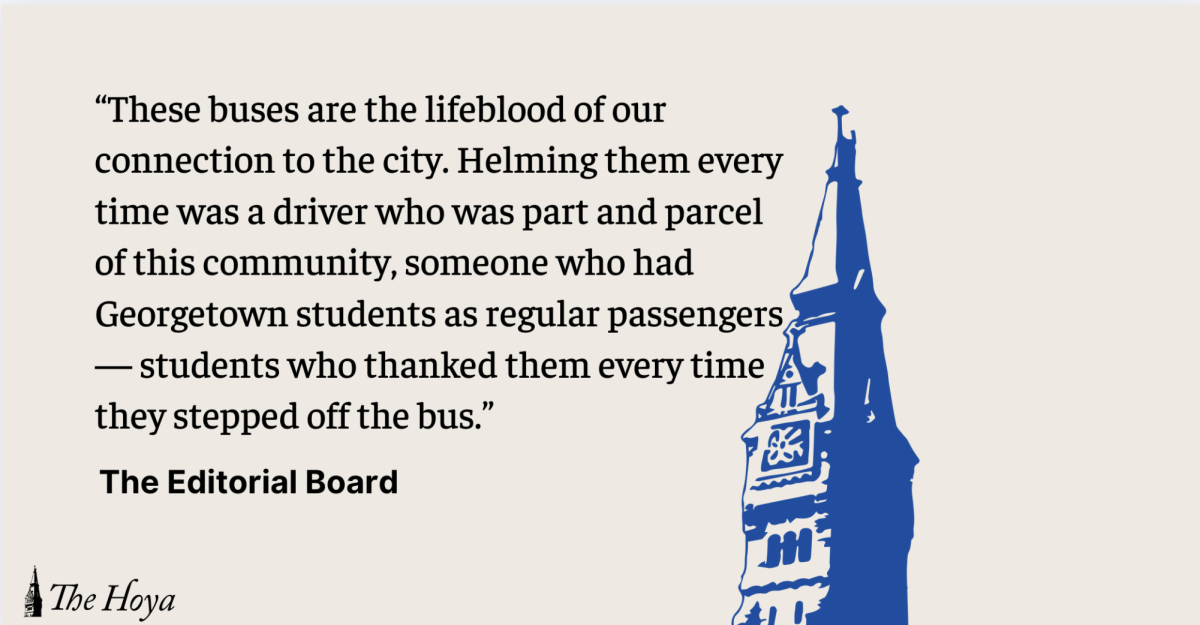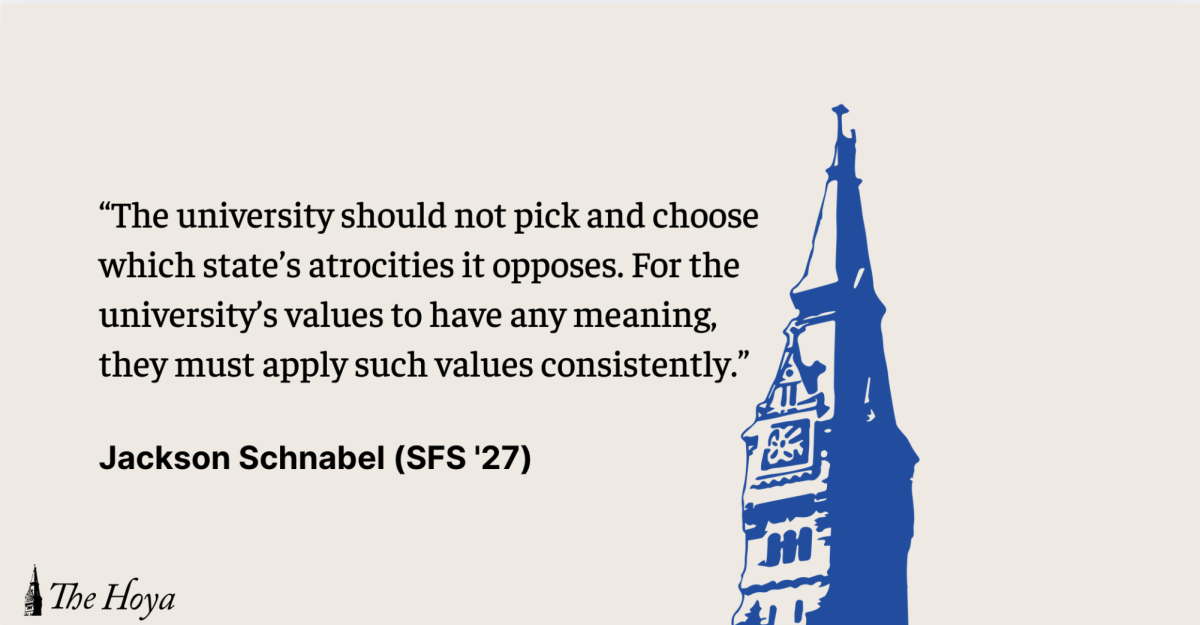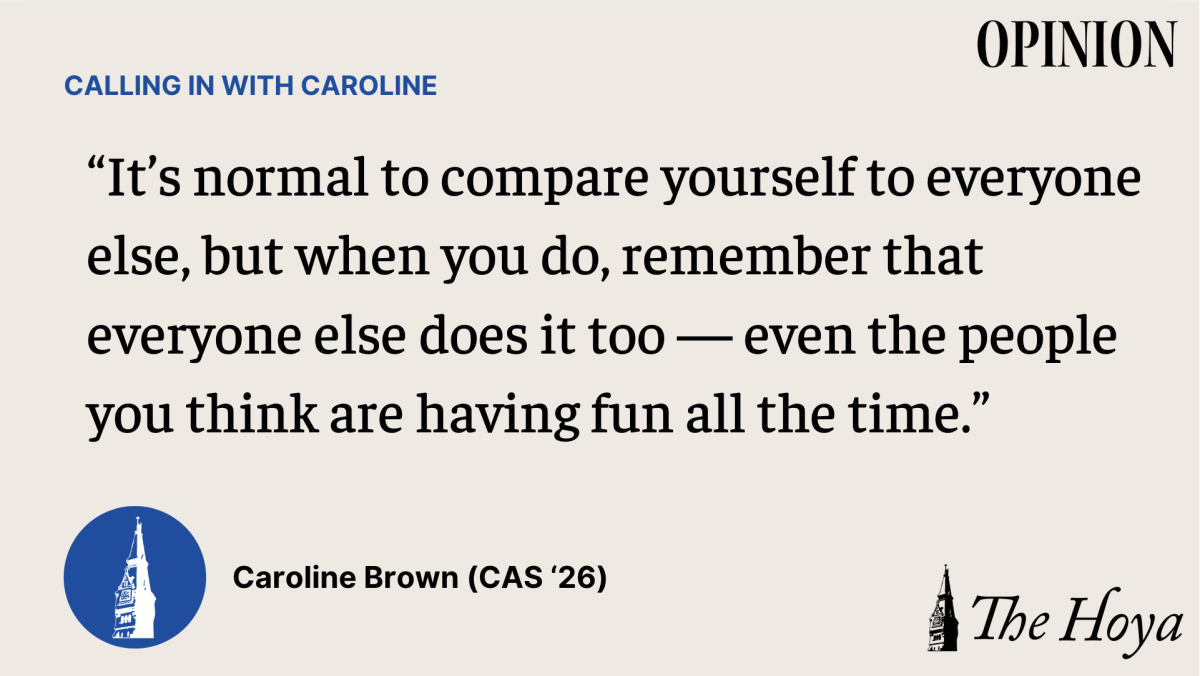It was my senior year of high school, and I found myself doodling in the margins of my notes. I didn’t think much of it — it was just a few doodles, and half the class was struggling to stay awake, anyway. In my mind, I was at least partially paying attention. Yet as my teacher paused amid one of her long personal tangents, she glanced over my sketches and scoffed, “What are you, five? Grow up.” The class dryly chuckled and the moment passed quickly, but for some reason, what she said lingered with me. She could have said anything: “Pay attention,” or “Quit screwing around.” What necessitated that specific response? Is drawing past the age of five something that should be met with ridicule?
What does “growing up” mean in our current culture? Increasingly, it seems to mean relinquishing creativity for conformity. I believe it’s about time we, as Georgetown students, reclaim that creativity as an essential part of adulthood.
On the surface, it seems pragmatic: Growing up requires a more practical approach to life. As children, we lack the knowledge and experience to make fully informed decisions, so we rely on our creative thinking to understand the world around us. As we mature, we are able to apply critical reasoning to explain phenomena while we move creative thinking to the back burner. We generally seem to accept this as a natural part of life, but I don’t believe it’s as cut and dried as we make it out to be.
As we grow, we become more cognizant of social perception. Our increasing awareness of how we appear to others often becomes a barrier to creativity by creating fear, particularly the fear of failure. We develop this “all-or-nothing” mindset that requires us to have a basic competency in any subject we engage in to avoid facing that risk. As such, we are conditioned to avoid any situations in which we may experience failure, even if insignificant. Children, on the other hand, are largely free — and even encouraged — to fail as much as they please.
By adolescence, institutions begin to reward conformity over originality. Schools often preach about the importance of “creative thinking,” but often find themselves actively stifling student creativity. Children quickly learn that straying from general conventions carries consequences — a bad grade for not sticking to the rubric or a trip to the principal’s office for mouthing off. Once again, fear, this time the fear of consequence, binds us to neglect self-expression and critical thought. By the time students arrive at college, they’ve already been beaten down by a barrage of standardized curricula, rigid rubrics and pre-professional expectations.
This culture of compliance exists outside of academia as well. I’d be remiss not to mention the overwhelming amount of book bans, protest crackdowns and curriculum restrictions brought by our governing administrations. When entire books are pulled from shelves under the pretense of defending against “woke ideology” or “radical indoctrination,” when protesters are arrested for expressing ideas in opposition to those of the administration, when high school teachers are told they cannot teach AP Psychology or AP African American Studies, the message is clear: Difference is dangerous. Once more, fear — the fear of difference — leads to the same outcome: a generation of young adults incapable of pluralistic thinking, who seldom deviate from what is deemed safe and acceptable. Space for creativity — specifically divergent thinking — is deliberately constricted.
Creativity can not prosper in a culture of fear. To truly reach our potential, we can’t allow these pressures from our culture and institutions to paralyze our willingness to explore new ideas; if we do, cultural and institutional pressures will begin to dictate more and more which ideas are safe to explore and which are off limits.
If a society loses its capacity for self-expression, it then loses the ability to question itself. A culture that treats difference as inefficiency produces a passive hive mind of individuals. This stagnation shows itself everywhere: in repetitive cultural trends being fed to us through algorithms, in public debates where the same topics and narrow arguments are rehearsed, in artificial intelligence chatbots regurgitating what they’ve scraped from datasets of preexisting ideas. Increasingly, we are becoming stagnant at the level of thought itself. We are being limited in our ability to imagine radical new alternatives, much less actualize them. This causes us to grow ever more likely to accept authoritarian policies and become less capable of holding power accountable.
Creativity underpins progress itself. A labor force trained to follow instructions is ill-equipped for the rapidly changing global market of today. Scientific breakthroughs cannot be made when research is constrained by rigid thinking and political orthodoxy.
The task ahead is not to grow out of creativity but to grow back into it. To reclaim creativity is to reclaim the pluralism of ideas and sustain a free, dynamic society. If creativity is dismissed as childish, then maybe we should keep being children for a little while longer.
Ege Alidedeoglu is a freshman in the College of Arts & Sciences. This is the first installment in his column “Thinking Through the Beltway.”
